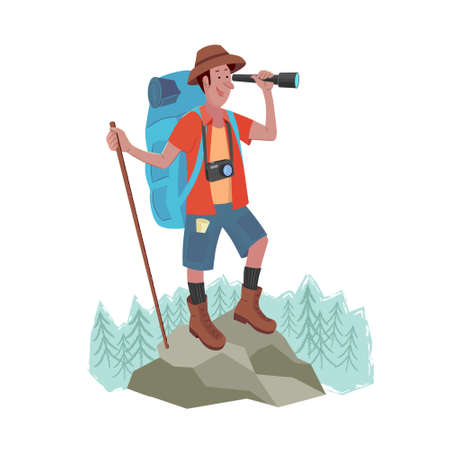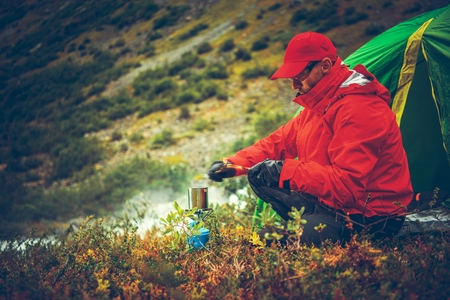Introduction to Navigation in the Great Outdoors
When you and your family head out for a camping adventure, knowing how to find your way is just as important as packing enough snacks or remembering your tent poles. Whether you’re trekking through thick forests, exploring winding trails, or setting up camp under the stars, navigation is a life skill that every camper should have in their toolkit. In today’s world, campers have two main options to guide their journey: high-tech GPS devices and good old-fashioned map-and-compass methods. Each approach brings its own advantages—and challenges—to the table. Understanding both can make a world of difference when it comes to safety, confidence, and making memories outdoors. Before diving deeper into the pros and cons of each method, let’s take a practical look at why mastering navigation matters so much when venturing into nature’s playground.
2. Understanding GPS: Features, Benefits, and Limitations
For families venturing into the great outdoors, understanding how GPS (Global Positioning System) works can make your camping experience safer and more enjoyable. GPS uses a network of satellites orbiting Earth to pinpoint your exact location, anywhere on the planet. With just a handheld device or smartphone, campers can access real-time positioning information that takes the guesswork out of navigation.
Key Features of GPS for Campers
| Feature | Description |
|---|---|
| Real-Time Location Tracking | Shows your current position instantly, helping you stay on course. |
| User-Friendly Apps | Many apps offer intuitive maps, route planning, and even emergency alerts. |
| Waypoint Marking | Allows you to mark campsites, water sources, or points of interest for easy return. |
| Route Recording | Keeps a log of your journey so you can retrace your steps if needed. |
Benefits of Using GPS While Camping
Modern campers appreciate GPS for its convenience and reliability. No more fumbling with paper maps or worrying about getting lost—GPS provides peace of mind with features like:
- Accurate Navigation: Know exactly where you are, even in unfamiliar terrain.
- Quick Access to Maps: Instantly view detailed trails, elevation changes, and landmarks.
- Family Safety: Easily share your location with loved ones or rescuers if needed.
- Customizable Alerts: Set reminders for trailheads, rest spots, or danger zones along your route.
Common Limitations to Consider
Despite these advantages, GPS isn’t perfect. It’s important for families to be aware of some common issues when relying solely on electronic navigation:
| Limitation | Impact on Campers | Tips to Overcome |
|---|---|---|
| Battery Life | If your device runs out of power, you lose navigation capabilities. | Carry extra batteries or a portable charger; keep devices off when not needed. |
| No Signal in Remote Areas | Dense forests or deep canyons may block satellite signals, making GPS less reliable. | Download offline maps before your trip; always have a backup plan. |
| User Error/App Glitches | Mistakes in app use or software bugs can lead to confusion. | Familiarize yourself with your device before heading out; practice using it at home. |
The Bottom Line for Families
While GPS technology offers fantastic benefits for campers—especially those new to wilderness navigation—it’s crucial to understand its limitations. Always pair digital tools with basic navigation skills for a safe and memorable family adventure!

3. Traditional Navigation: The Art of Map and Compass
When it comes to exploring the great outdoors, traditional navigation skills—like reading a topographic map and using a compass—are time-tested essentials that every camper should know. While GPS devices offer convenience, there’s something reliable and empowering about mastering these classic tools, especially for families adventuring together.
The Reliability of Old-School Navigation
Unlike electronic devices, maps and compasses never run out of battery or lose signal under dense tree canopies. Weatherproof and durable, these tools are always ready when you need them most. When technology fails—think dead batteries or dropped devices—your ability to navigate with a paper map and compass becomes your safety net. For American campers, who often venture into national parks or wilderness areas with limited cell service, these skills are a must-have backup.
Teaching Kids Lifelong Skills
Introducing kids to traditional navigation builds confidence and independence. You can make it fun: Turn finding trail markers on a topo map into a treasure hunt, or challenge your child to lead the family hike using the compass. By learning how contour lines show hills and valleys, or how to orient a map using landmarks, children develop spatial awareness and problem-solving skills that go far beyond camping trips.
Why These Skills Stand the Test of Time
No matter how advanced technology becomes, knowing how to use a map and compass remains an essential outdoor skill in American camping culture. It connects us to the way generations before us explored the wild—and gives our families peace of mind that we can always find our way home. Passing down these skills not only keeps traditions alive but also ensures everyone’s safety on every adventure.
4. Hands-On Comparison: When to Use GPS vs. Traditional Methods
When you’re camping with your family, choosing between GPS and traditional navigation methods isn’t just about preference—it’s about what works best for the situation at hand. Let’s explore practical, real-life scenarios to help you decide which tool to use for a safer and more enjoyable outdoor adventure.
Scenario 1: Hiking a New Trail
If your family is exploring a new trail in an unfamiliar state park, using a GPS device or smartphone app can be incredibly helpful. These tools provide real-time tracking, so if kids get distracted by wildlife or wander off the path, you’ll always know exactly where you are. Plus, many apps offer details like trail difficulty and distance remaining—perfect for planning snack breaks or estimating how long until you reach your next scenic viewpoint.
Best Choice:
| Situation | Recommended Method |
|---|---|
| Unfamiliar terrain with multiple intersecting trails | GPS Device/App |
| Well-marked trails with clear signage | Traditional Map & Compass |
Scenario 2: Facing Unexpected Weather
Imagine sudden fog or rain rolls in while you’re camping. Electronic devices may lose battery power or signal in bad weather. This is when knowing how to read a map and use a compass becomes invaluable! Teaching kids these skills not only builds confidence but also keeps everyone safe if technology fails.
Best Choice:
| Situation | Recommended Method |
|---|---|
| Poor visibility or dead batteries | Map & Compass |
| Clear conditions with reliable electronics | GPS Device/App |
Scenario 3: Planning Family Adventures
If your family loves geocaching or wants to track progress on a long hike, GPS makes it easy and fun to set waypoints or check distances. On the other hand, using a paper map can turn navigation into an interactive learning game for younger campers—try letting each child take turns finding landmarks!
Quick Tips for Parents:
- Always bring both GPS and traditional tools as backup.
- Practice using a compass together before your trip.
- Teach children how to recognize local landmarks on both maps and screens.
The bottom line? Both GPS and traditional navigation have their place in family camping. The key is knowing when to use each one so your adventures stay safe, memorable, and fun for everyone!
5. Building Confidence: Teaching Navigation Skills to Kids
One of the greatest gifts you can give your child on a camping trip is the confidence to find their way in the great outdoors. Whether you rely on GPS or traditional map and compass, teaching kids basic navigation not only keeps them safe but also nurtures independence and curiosity about nature. Start by involving your children in simple tasks, like reading trail signs or identifying landmarks together. Encourage them to help plan your route using both a physical map and your GPS app, so they can see how the tools work side by side.
During hikes, hand over the compass or GPS device and let your child lead for a short stretch under your supervision. Ask questions like, “Which direction are we heading?” or “Can you point out our next landmark?” This approach turns navigation into an engaging game while reinforcing important skills. It’s also helpful to practice what-ifs: walk through scenarios where the GPS loses signal or batteries run out, and show how to fall back on traditional methods. Bring extra printed maps for everyone and teach older kids how to orient themselves with a compass.
Remember, patience is key—mistakes are learning opportunities! Praise your child’s efforts and celebrate small successes, like finding a waypoint or matching features on the map to those around you. When kids feel trusted and involved, their confidence grows, making every adventure safer and more rewarding for the whole family.
6. Planning Your Next Camping Trip: Blending Both Worlds
When it comes to camping, the smartest approach is to combine the best of both worlds—modern GPS technology and time-tested traditional navigation skills. Relying solely on one method can leave you vulnerable if unexpected situations arise. Instead, packing both types of navigation tools ensures you’re ready for any adventure that comes your way.
Checklist of Navigation Essentials
- GPS Device: Make sure it’s fully charged and bring extra batteries or a portable charger.
- Smartphone with Offline Maps: Download maps before heading out in case you lose cell service.
- Compass: A classic tool that never needs charging or updates.
- Pocket-sized Paper Map: Choose a map specific to your camping area and laminate it for durability.
- Pencil and Notebook: For jotting down landmarks, directions, or emergency notes.
Safety Reminders for Every Camper
- Practice using your compass and map at home or during day hikes so you’re comfortable before you hit the trails.
- Let someone know your planned route and expected return time.
- Pack an emergency whistle and flashlight in case you need to signal for help after dark.
- If traveling with kids, teach them basic navigation skills and what to do if they get separated from the group.
Blending Technology with Tradition
The beauty of combining GPS and traditional methods is that you gain confidence and flexibility. If your GPS runs out of power or loses signal, your compass and map will guide you. If you need quick location tracking or want to mark a favorite spot, your GPS has you covered. By preparing with both, you’ll keep your family safe, informed, and ready to explore the great outdoors—rain or shine!

